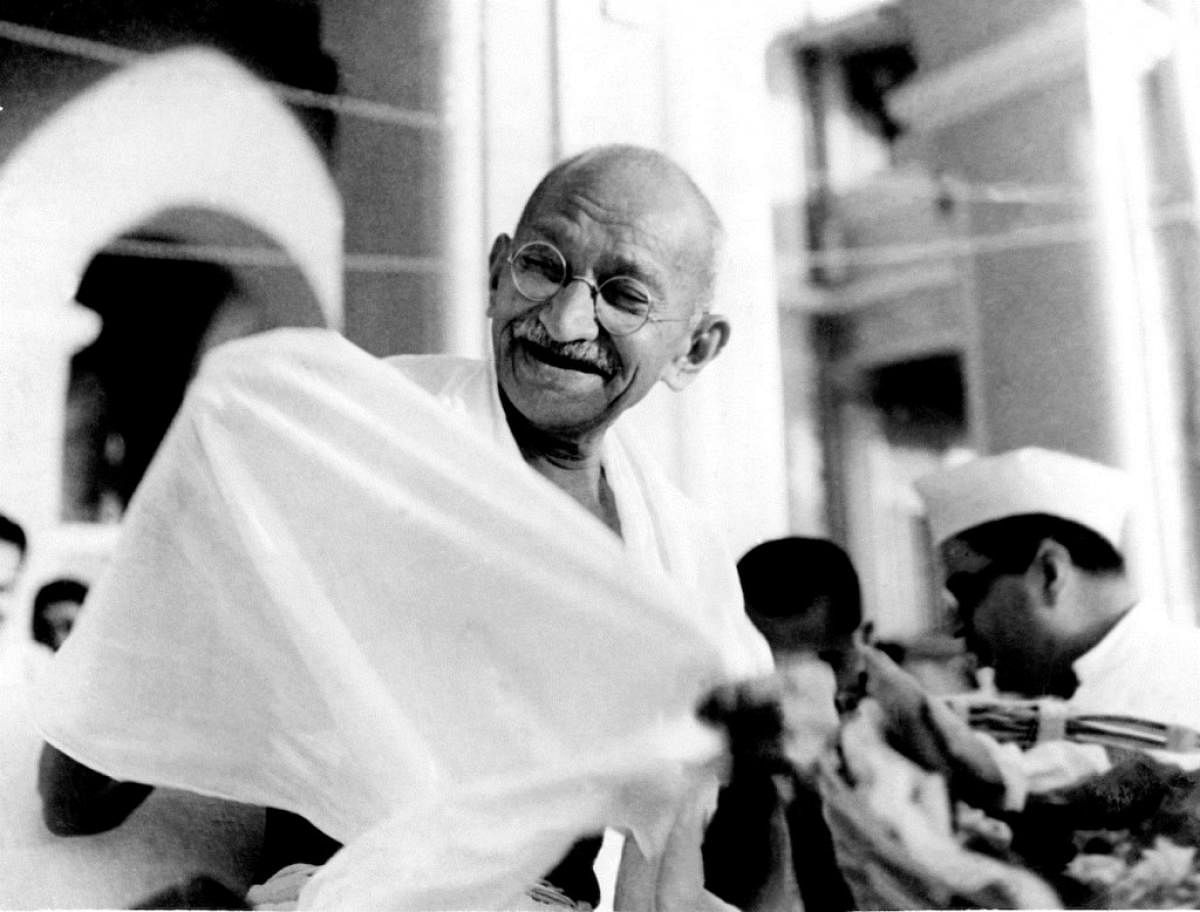Even as Mahatma Gandhi turns 150, the children of the nation he fathered, remain undecided about his relevance or lack thereof on their life and times. In recent years, this has become a seasonal sport where people love to float their theories on the matter like children plying paper boats in post-monsoon puddles.
A merely seasonal interest in Gandhi, the distance of time and the consequent public perception built on the basis of non-detailed school textbooks, and puerile popular media depictions help politicians, businesses, brands, social activists and influencers of all hues to use the Mahatma as malleable playdoh to suit their ends.
Violent Naxals can sympathetically be described as “Gandhians with guns”; Anna Hazare whose recipe for spreading temperance involves tying drunks to a tree and lashing them can
become a symbol of Gandhian piety. In present-day politics, while Gandhi as the father of the nation is paid lip service by all and sundry practitioners, no one invokes him more frequently than Narendra Modi. The Gandhi-family-owned Congress has to depend largely on the mythology of Nehru and his progeny. Taking advantage of Congress’s necessary condition to be hostage to Nehru-Gandhis, Modi has deftly prised Gandhi and Gandhians away from the party’s pantheon. There may not be much ideological affinity between Gandhi and Modi, but Gandhi seldom fails to make an appearance in his big speeches.
During the 2019 election campaign, Modi projected himself as the destroyer of the den of terror across the border. The rhetoric of “ghus ke maara” (hitting the enemy by breaking deep
into their territory) apropos Balakot is far removed from Gandhi’s veneration by some as a Bodhisatva—someone who is unconditionally compassionate to all sentient beings, and ready
to suffer for humanity. But it doesn’t stop Modi from invoking Gandhi in the same breath. For Modi who frequently deals in the currency of an aggressive Hindu identity based Indian Union, Gandhi is vital loose change for secular, social mobilisation on issues such as cleanliness, tackling the menace of plastics, or promoting the consumption of India-made products. Modern Indian politicians like him may not have Gandhian philosophy underpinning their socio-political outlook, but merely the desire to use him tactically to buy legitimacy. The contemporary antipathy to Gandhi usually comes from several quarters–the Ambedkarites, the Left and Right–for different reasons. The economic Right views “loony” Gandhian ideas on small-scale industries, and self- sufficient village units have prevented India from entering the modern world. His pacificism artificially grafted on to Indic civilisational values, while pretending to be within the Hindu fold is deemed to have emasculated the religion, according to the right-wing contractor of culture.
In1977, at the height of the emergency, when India seemed to be dissolving in the chaos of its contradictions, VS Naipaulinhisbook, India: A Wounded Civilization wrote this sharp critique of Gandhi’s India and Hinduism that even now seems to shape the ideas of Right: “But Gandhianism has had its great day, and the simple assertion of Indian antiquity won’t do now. The heritage is there, and will always be India's; but it can be seen now to belong to the past, to be part of the classical world… Its philosophy of withdrawal has diminished men intellectually and not equipped them to respond to the challenge; it has stifled growth. So that again and again, in India history has repeated itself: vulnerability, defeat, withdrawal.”
Indian spiritual masters offer seekers of salvation the analogy of the Kasturi Mriga or the musk deer as a metaphor to look within instead of running helter-skelter. While the rest of the world is discovering the essence of Gandhi, the modern Indian, it would appear has no time for Gandhi. We might perhaps rediscover him when the West ships back to us the musk of Mahatma’sideas packaged in snazzy, CFC-free, organic cannisters.
(The author is a Bengaluru-based journalist)
